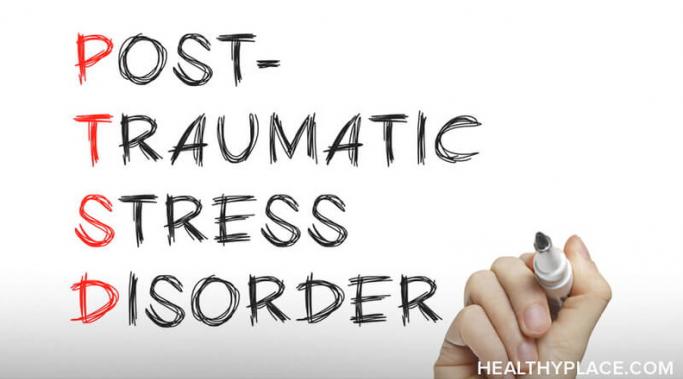I've learned about the benefits of practicing self-compassion in PTSD recovery. In my last post I talked a little bit about using self-compassion as one way of dealing with posttraumatic stress disorder (PTSD) and the shame that is associated with trauma. In this post, I want to dig deeper into how to be kind to ourselves and cultivate a practice of self-compassion to alleviate some of the symptoms of PTSD. Being kind to myself is something that I know I need to do more of, but it isn't something that comes naturally to me, and I suspect that is true for many trauma survivors. When I am able to practice self-compassion in PTSD recovery, I find that dealing with PTSD symptoms is easier and my negative self-talk and feelings are lessened.
Trauma! A PTSD Blog
We all need to heal the shame associated with trauma and posttraumatic stress disorder. Trauma survivors and those of us with posttraumatic stress disorder (PTSD) often have a heavy feeling of shame attached to our trauma. Shame related to trauma is especially common in survivors of domestic violence, physical and sexual abuse, and rape. I have experienced shame related to the trauma that led to my PTSD, and it has been difficult to make sense of. It is something that I continue to work on in my PTSD recovery even now. Fortunately, there are some effective ways to deal with the shame that accompanies trauma and PTSD.
There are various types of treatment for posttraumatic stress disorder (PTSD), and they don't all work the same for everyone. A specific treatment may work for one person, and not another. Using a 12 step approach for PTSD, along with other traditional methods of treatment, has been helpful to me in my recovery, and it could be helpful for you. Previously, I've covered the first nine steps, and this post will explain the last three steps of the 12 step approach for PTSD recovery.
Using a 12 step program for posttraumatic stress disorder (PTSD) recovery, in addition to traditional PTSD treatments, has been helpful to my recovery. Adapting the steps to trauma-related PTSD is easy and the benefits that I have gotten from working the steps has lessened my PTSD symptoms and improved my life. While 12 step programs are generally only thought of as useful in treating alcoholism and addiction, I have found that using a 12 step approach for PTSD recovery is favorable in other situations as well. In previous posts, I have covered the first three steps and steps four, five, and six. This post focuses on steps seven, eight and nine of the 12 step approach to PTSD recovery.
Applying the 12 step approach to posttraumatic stress disorder (PTSD) recovery is just one way that I have found to strengthen my PTSD recovery and improve my life. Because the steps that are commonly used for addiction recovery are all about learning to live life in a new way, they can successfully be applied to many things other than drug addiction and alcoholism. I've used the 12 steps for my alcoholism, codependency, and PTSD, and I have found that if you are open-minded and willing, they really do work. I wrote about applying the steps 1 -3 last time, so here are steps four, five, and six to help you apply the 12 steps to PTSD recovery.
Applying the 12 step approach is one way to enhance posttraumatic stress disorder (PTSD) recovery. Because many of us who suffer from PTSD have also suffered from drug or alcohol addiction, I think applying the 12 steps to our PTSD recovery only makes sense. If we are finding relief from our addiction by using the 12 steps, which teaches us a new way to live, then we can apply that new way of living to our PTSD recovery as well. Even for PTSD sufferers who don't have a problem with drugs or alcohol, I believe the 12 step approach can be helpful.
Recovery from posttraumatic stress disorder (PTSD) comes in many forms, one of which is utilizing the transferable principles of a 12-step program in PTSD recovery. Many of us who suffer from PTSD also suffer from addiction to drugs or alcohol, myself included, and we use the 12 steps as a tool for our recovery from addiction. Applying the 12 steps to my PTSD recovery is something that I have found helpful, and you may, too.
In PTSD recovery, the freeze response can be difficult for some to understand. Have you ever been so terrified, that all you could do is freeze in your tracks, afraid, or even unable, to move? If so, you may have been experiencing the freeze response to fear, which is a common symptom of posttraumatic stress disorder (PTSD). The freeze response is a normal, physical response to extreme fear or trauma. However, if you are a trauma survivor who has been diagnosed with PTSD, the freeze response may not be serving you well. The physical response of freezing, feeling paralyzed, or feeling like you are out of your body (dissociation), can be triggered by events that are not at all life-threatening for those of us with PTSD (PTSD and the Freeze Response). In other words, our response doesn't fit the current situation. Dealing with the freeze response can be frustrating, but you can deal with the freeze response in PTSD recovery.
Grounding techniques for anxiety can be very helpful in posttraumatic stress disorder (PTSD) recovery. The anxiety that those of us with PTSD suffer can be frightening and frustrating; whether it comes in the form of flashbacks, nightmares, or full-blown panic attacks. Using grounding techniques for anxiety in PTSD recovery to remind ourselves that we are alright, and in no imminent danger, is one way to help.
Posttraumatic stress disorder (PTSD) is a complex disorder that can be hard to understand if you haven't experienced it first-hand, so there are things that people with PTSD want you to know. Even those of us who suffer from it sometimes have difficulty explaining it to others. We don't all have the same PTSD symptoms, and we don't all respond to the same kinds of PTSD treatment. However, while there can be a lot of differences in the way people with PTSD respond to past traumas and to their recovery, there is one thing that I think most of us can agree on: we wish others could better understand PTSD and the feelings and behaviors that come with it. Here are 10 things that people with PTSD want you to understand.









